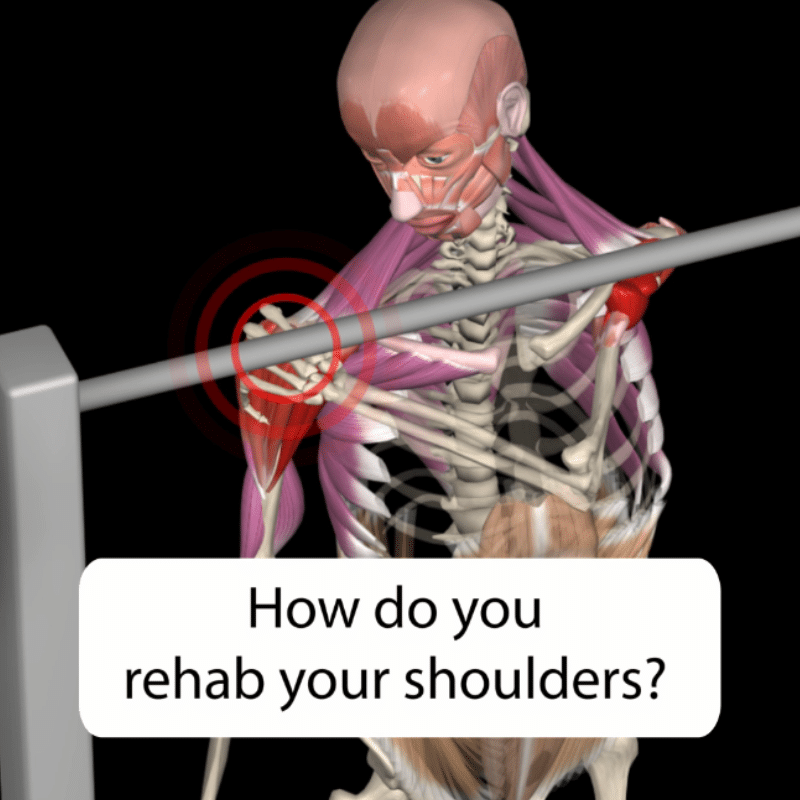Dealing with rotator cuff-related shoulder pain can be frustrating and debilitating. However, there’s good news for those seeking relief through rehabilitation exercises! In this detailed muscle and motion article, we’ll delve into the anatomy of the rotator cuff, explore the significance of incorporating kinetic chain exercises, and provide you with a range of exercises to alleviate your discomfort.
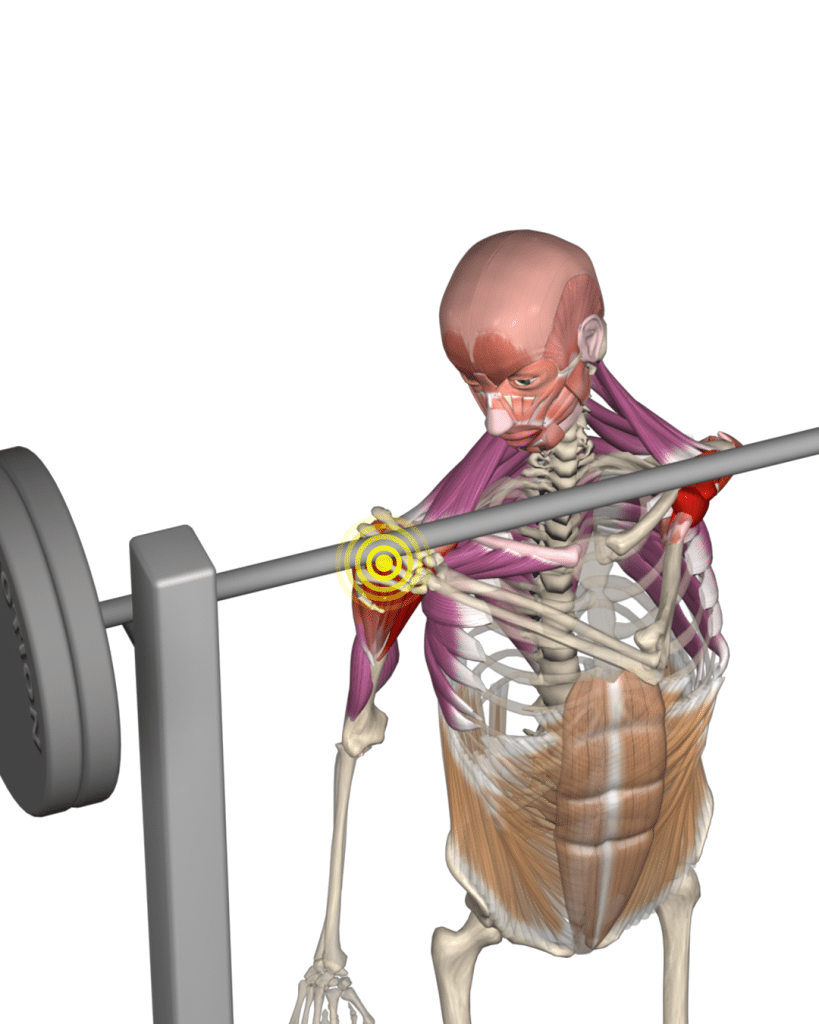
Understanding the anatomy of the rotator cuff
The rotator cuff is a group of four muscles and their tendons that play a crucial role in stabilizing the shoulder joint and enabling various arm movements.
These muscles include the following:
- Supraspinatus
- Infraspinatus
- Teres minor
- subscapularis.
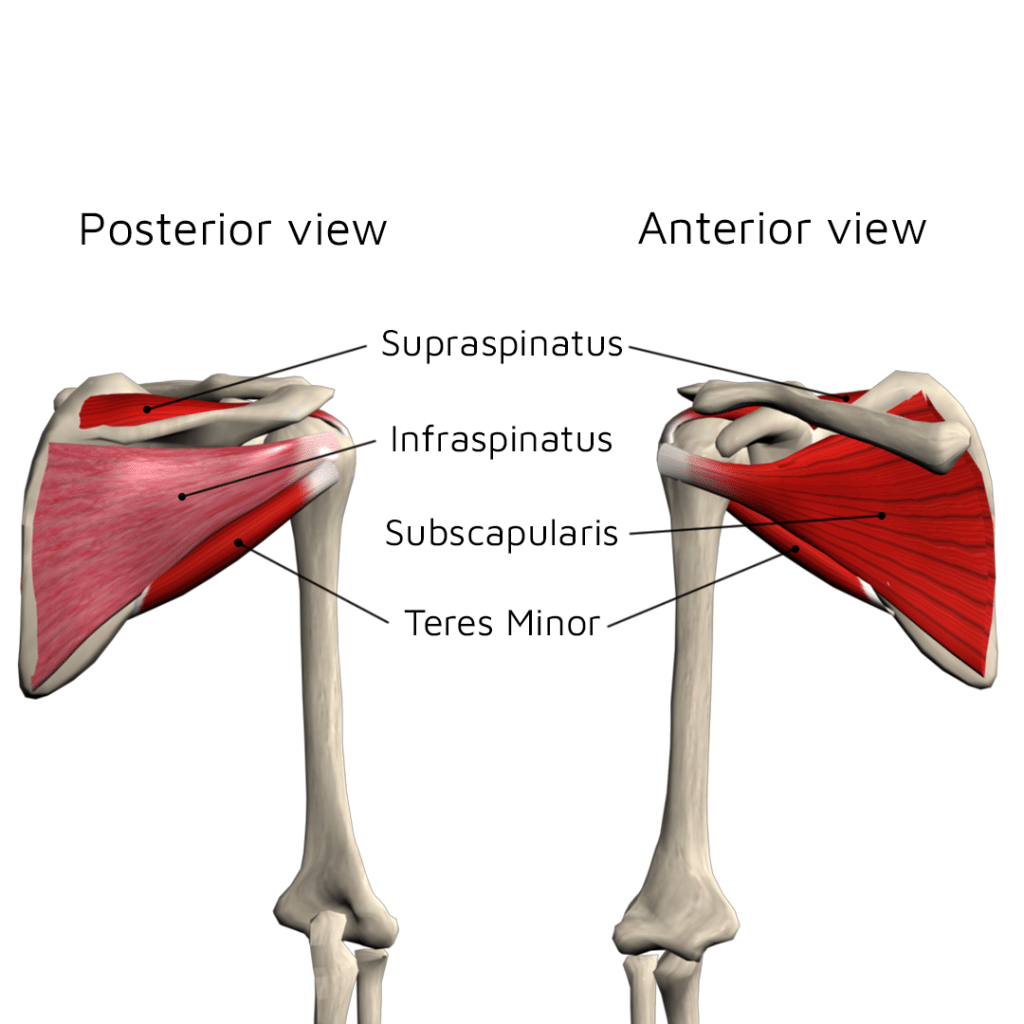
These muscles work together to support various arm movements, such as lifting, rotating, and reaching. Any impairment to these muscles can result in rotator cuff-related shoulder pain.
What is the treatment for rotator cuff-related shoulder pain?
There are many ways to address rotator cuff-related shoulder pain. As previously mentioned, our primary focus in this article is on an exercise-centered rehabilitation program aimed at aiding individuals in managing rotator cuff-related shoulder pain. These exercises are tailored for instances where there is no noticeable limitation in the shoulder joint’s range of motion, but the pain arises during specific movements.
If there happen to be any restrictions in the range of motion of the shoulder, the initial phase of the rehabilitation process should encompass exercises intended to enhance the active range of motion. However, these exercises are not covered within the scope of this article.
The Role of Kinetic Chain Exercises in Rotator Cuff Rehabilitation
Kinetic chain exercises involve the coordinated movement of multiple joints and muscle groups. In the context of rotator cuff rehabilitation, incorporating kinetic chain exercises can lead to remarkable improvements in pain relief and functional recovery. This is because such exercises focus not only on the shoulder but also involve movements of the trunk and lower limbs, creating a holistic approach to managing rotator cuff-related shoulder pain and rehabilitation.
Scientific Backing: Kinetic Chain Exercises and Muscle Recruitment
A recent systematic review has highlighted the benefits of including kinetic chain exercises in shoulder rehabilitation. The review revealed that incorporating kinetic chain movements leads to increased muscle recruitment in the axioscapular area. This area is vital as it encompasses muscles such as the serratus anterior, trapezius, rhomboids, levator scapulae, and pectoralis minor. Furthermore, the integration of kinetic chain exercises can also help reduce strain on the rotator cuff muscles.[1]
Kinetic Chain vs. Isolation Exercises
Compared to isolation exercises like the shoulder external rotation, kinetic chain exercises involving lateral lower quadrant weight transference, such as stepping, demonstrate superior outcomes. These exercises challenge the body to work synergistically, engaging various muscle groups simultaneously. This can lead to improved muscle activation, functional movement patterns, and overall efficiency in shoulder rehabilitation.[1]
Examples of kinetic chain exercises for rotator cuff-related shoulder pain you can start using today in your practice:
Execute a rear lunge while simultaneously performing an overhead press with a kettlebell. This exercise combines lower body and shoulder movements, promoting coordination and stability.
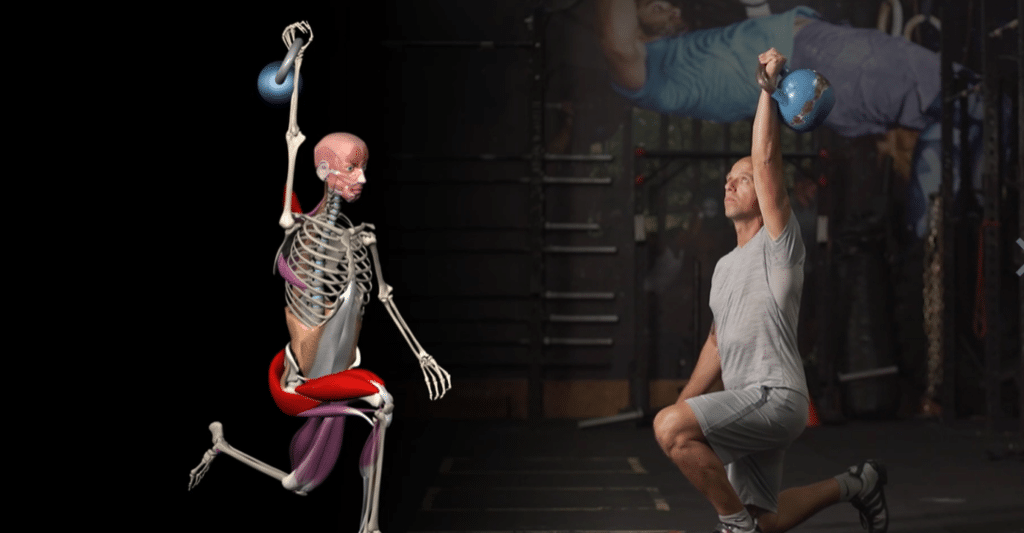
Incorporate a squatting motion while tossing a medicine ball overhead. This exercise merges lower-body strength with an upper-body throwing movement.
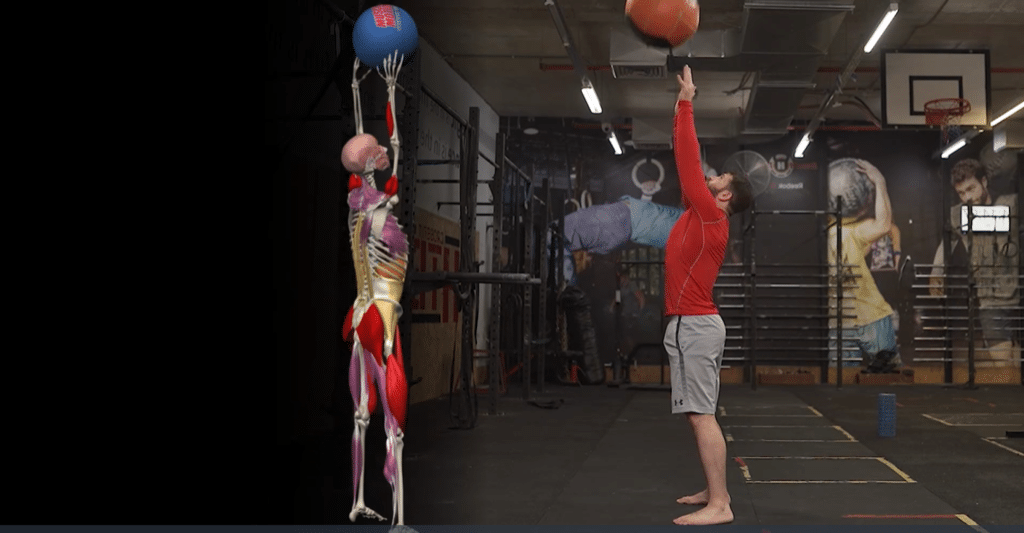
This exercise is a combination of a front squat and an overhead press. The upward momentum and acceleration of the bar come from the feet pushing the floor.
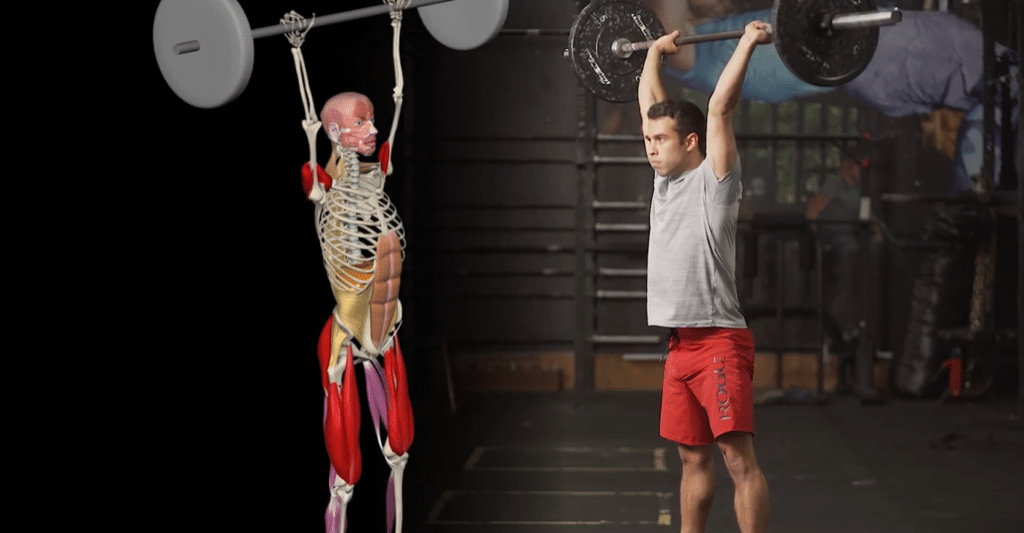
This exercise is a combination of landmine squat with rotational press. This is a functional exercise that combines two planes of movement simultaneously.
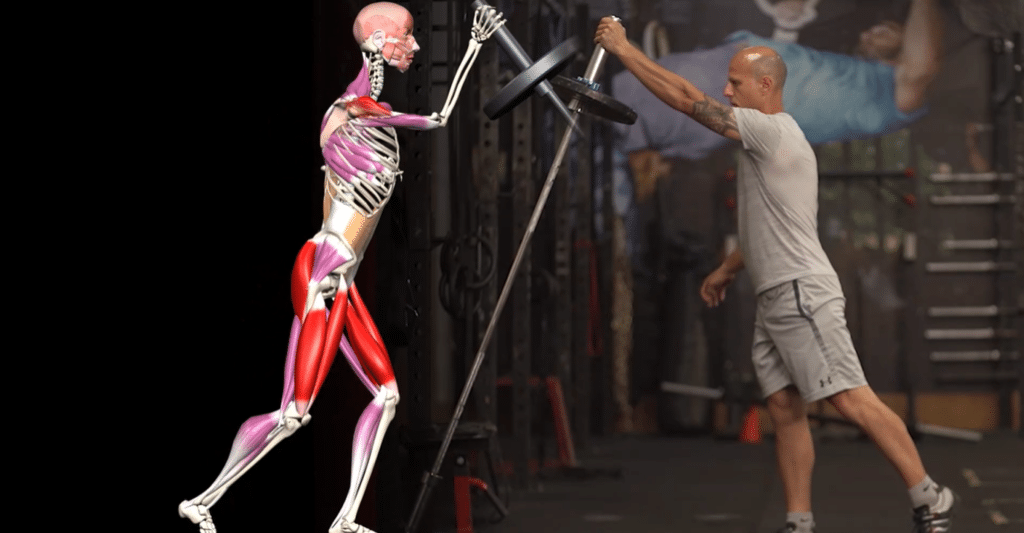
In conclusion, addressing rotator cuff-related shoulder pain goes beyond isolated exercises. The integration of kinetic chain movements offers a holistic approach to rehabilitation, enhancing muscle recruitment, functional movements, and overall efficiency. By understanding the anatomy of the rotator cuff and incorporating exercises like stepping to shoulder press and squat to overhead press, you can pave the way towards improving your shoulder function and pain relief.
This article is for educational purposes only and should not be used for any other purpose.
At Muscle and Motion, we believe that knowledge is power, and understanding the ‘why’ behind any exercise is essential for your long-term success.
Let the Strength Training App help you achieve your goals! Sign up for free.
Reference:
-
- Richardson, E., Lewis, J. S., Gibson, J., Morgan, C., Halaki, M., Ginn, K., & Yeowell, G. (2020). Role of the kinetic chain in shoulder rehabilitation: does incorporating the trunk and lower limb into shoulder exercise regimes influence shoulder muscle recruitment patterns? Systematic review of electromyography studies. BMJ Open Sport & Exercise Medicine, 6(1), e000683.
